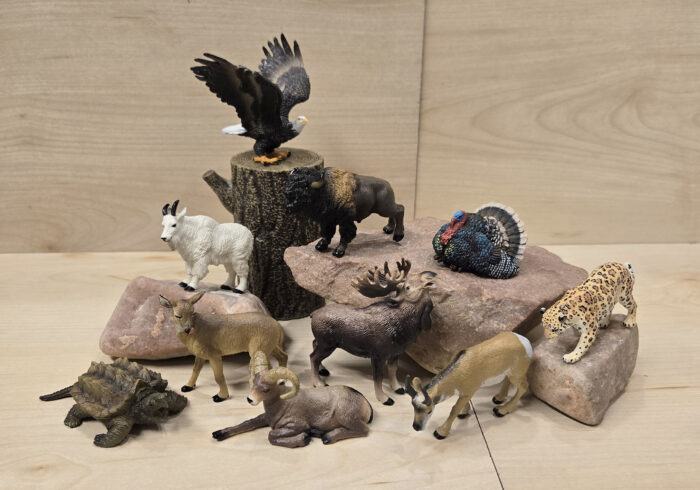Before I start this Blogpost, I must again thank @Kenc and the folks at Toymany for donating this review sample. It is very much appreciated. As with other Toymany set reviews, this is a general overview to introduce the animal toy community to the set and does not prevent others from doing more in-depth reviews of individual figures.
Classification: Antelopes
Blue Wildebeest (Wild Animals by Papo)

A walk-around of Papo’s Blue or Common Wildebeest, Connochaetes taurinus (Burchell, 1823) from the Wild Animals line or “Les Animaux Sauvages”, originally produced in 2009. The shoulder height of this figure is 79 mm, so corresponding to a shoulder height of adult specimens between 1.18 and 1.45 m the scale would be approx.
Gazelle (AAA)
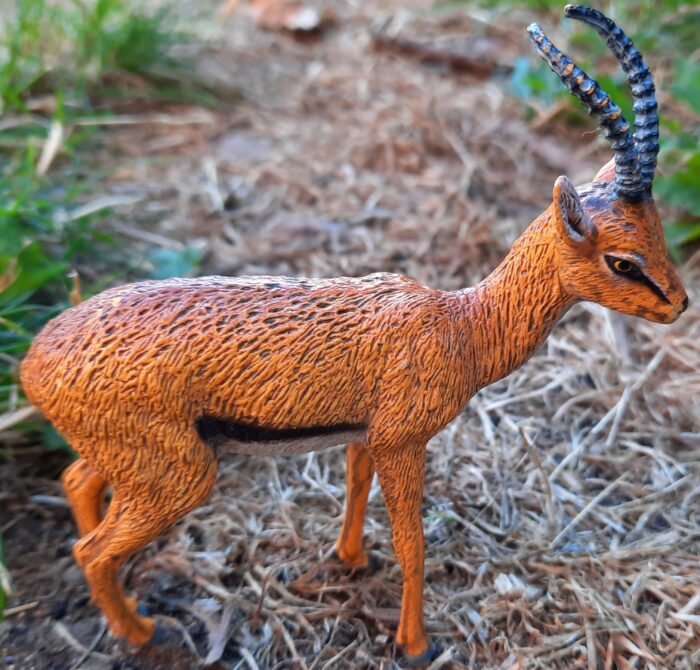
Well, here we are. Another “Savanah Summer” draws to a close. Nights are drawing in and temperatures slowly drop. But we have time for one last review from the African plains. And we look at one of the speedsters of the savannah: the Gazelle, curtesy of AAA.
As it is only referred to as a Gazelle, we need to discern species.
Sahara Desert TOOB (Safari Ltd.)
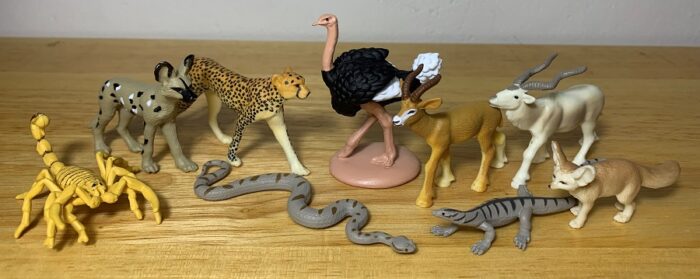
The Sahara Desert covers about 25% of the African continent and is the largest hot desert in the world, with an area of 3,600,000 square miles (9,200,000 km). This immense ecosystem is made up of sand dunes, some of which are 500’ tall, stone plateaus, sand seas, gravel plains, dry valleys, and sand flats.
Springbok (Plastic Zoo Series by Britains)
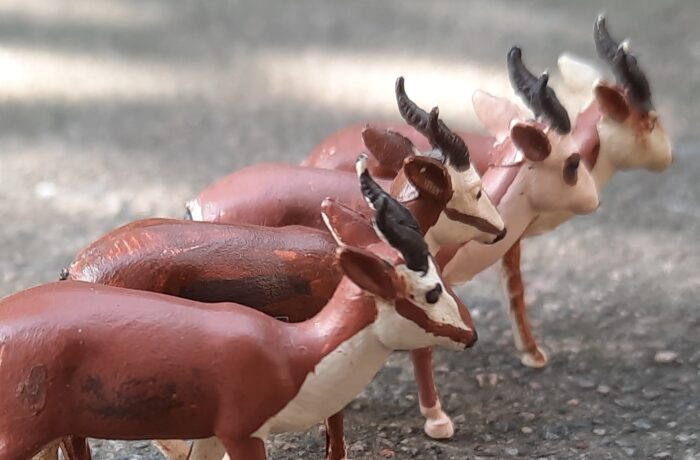
The plains of Africa are filled with a magnificent array of wildlife. From majestic lions to humongous elephants, it is a continent with a huge level of biodiversity. But it’s not just the big animals that gain notoriety. The national animal of South Africa is a modest sized animal, a mere 86cm at the shoulders, yet is the symbol of the nation, plus the nickname of their rugby team.
Red Gazelle (Yowies Forgotten Friends Series A by Cadbury)

Africa is an amazing continent, full of incredible species throughout the history of the world. Many are sadly no longer extant, lost to time, often as the result of human expansion. Such is the case with the Red Gazelle, found in Algeria, all that is now left of this species are a few specimens…..
Mountain Nyala, Pair (Noah’s Pals by Caboodle! Toys LLC)
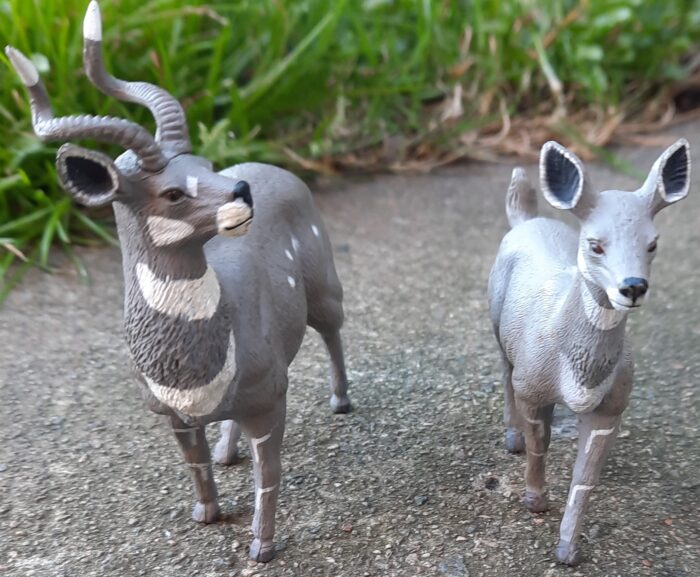
Africa is a land of amazing creatures, whether in the Savanna or the highlands, you will find life. In central Ethiopia, in the high altitude woodlands, you will find one beautiful species, the Mountain Nyala (Tragelaphus buxtoni), shy creatures found browsing in small herds at high altitudes.
Roan Antelope, Pair (Noah’s Pals by Caboodle! Toys LLC)

Though a wastebasket taxon, antelopes are still an endearing group, filled with many similar yet diverse species. There are several large members of this group, and this review will show one in the top 5 of these, the Roan Antelope (Hippotragus equinus). Found in Southern, Western and Central Africa, they are only smaller than the eland, male Kudu and Bongo, showing them as sizeable creatures.
Nilgai (Wildlife by CollectA)

Review and images by EpicRaptorMan; edited by bmathison1972
Behold, the nilgai (Boselaphus tragocamelus), the largest Asian antelope native to much of India. This antelope is a bit of an oddity once described by Elizabeth Cary Mungall in her book “Exotic Animal Field Guide” as a “[…] combination of a horse and a cow with the beard of a turkey and short devil horns.” Which is a fairly accurate description.
Common Eland (Plastic Zoo Series by Britains)

Welcome back to another “Savanah Summer”!! Over the years, companies across the globe have produced many different species, from Starlux to Safari Ltd. One of the older lines to do this is Britains, a British company that have made all sorts, from toy soldiers to farm and zoo species. They produced some very interesting species, such as this one; the common eland (Taurotragus oryx), the second largest antelope in the world, second to only the Giant Eland.
Oryx (Wild Animals by Papo)

Carrying on with the “Savannah Summer”, we head to the Kalahari, the land of great thirst. The precipitation is low, so survival can be tricky. Even still, life finds a way, and even relatively large species can call the area home. Take the gemsbok or oryx (Oryx gazella), a large species of antelope, which is a native to this large, often dry expanse.
Saiga Antelope (Wildlife by CollectA)
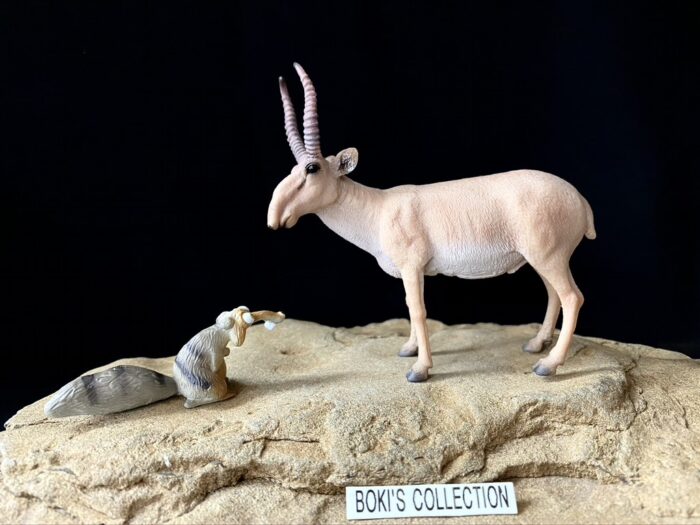
As strong winds swept across the steppe, vast herds of grazing animals can be seen dotting the landscape. It would be easy to mistake the scene as something out of Africa. After all, rhinos, elephants, big cats, and antelopes can be seen in the distance. But this is not Africa, the vast landscape stretching before us is the Eurasian steppe during the last ice age.

